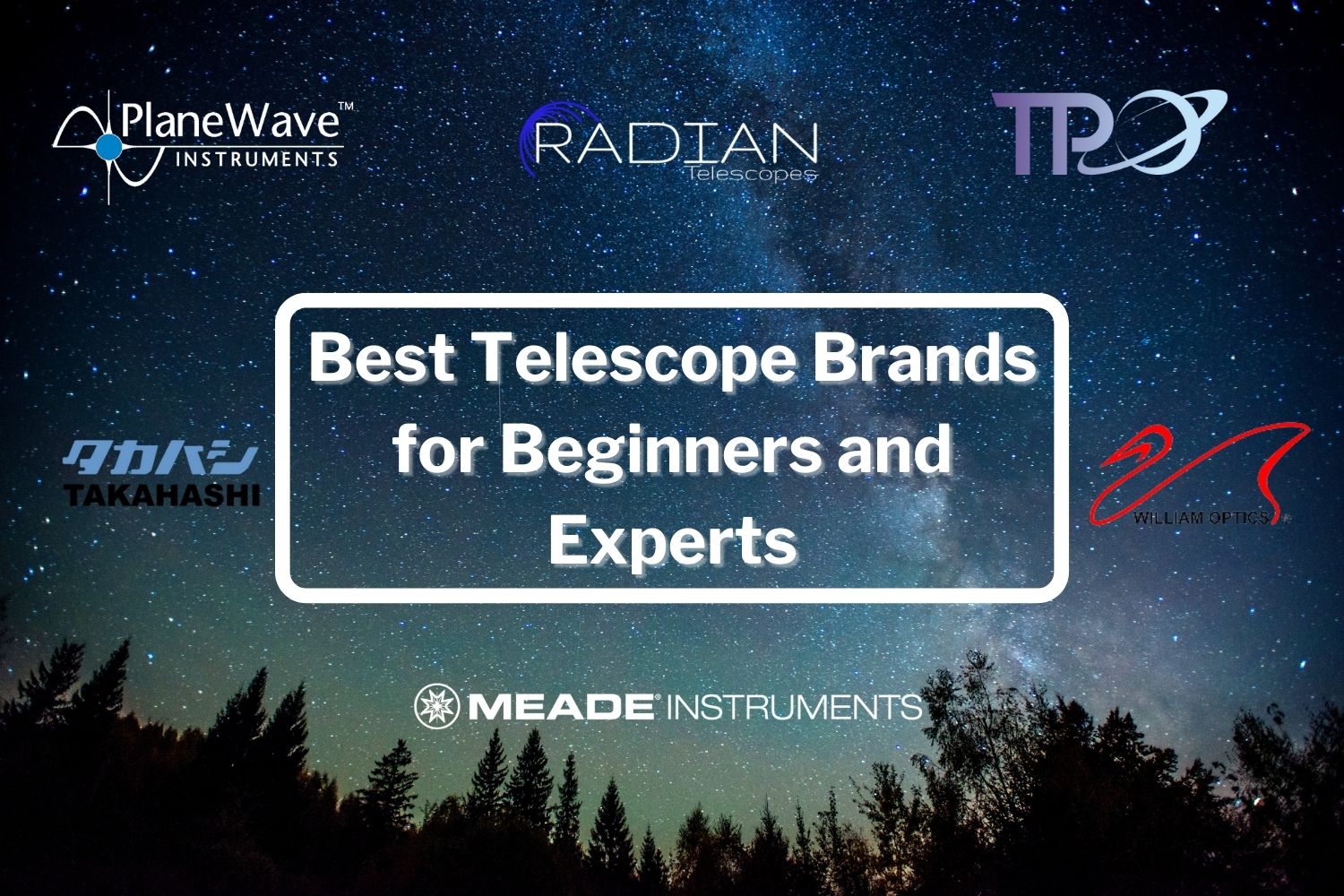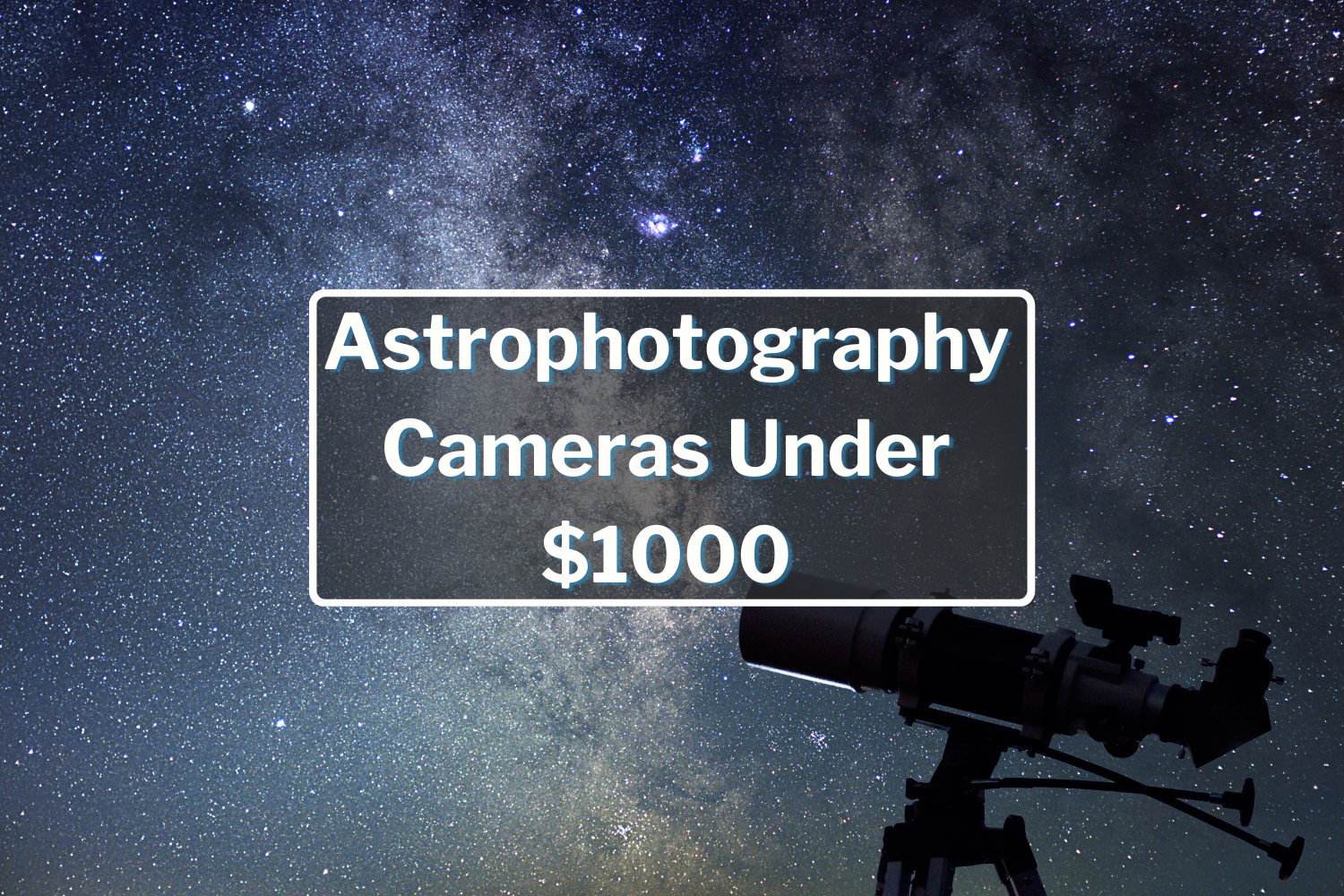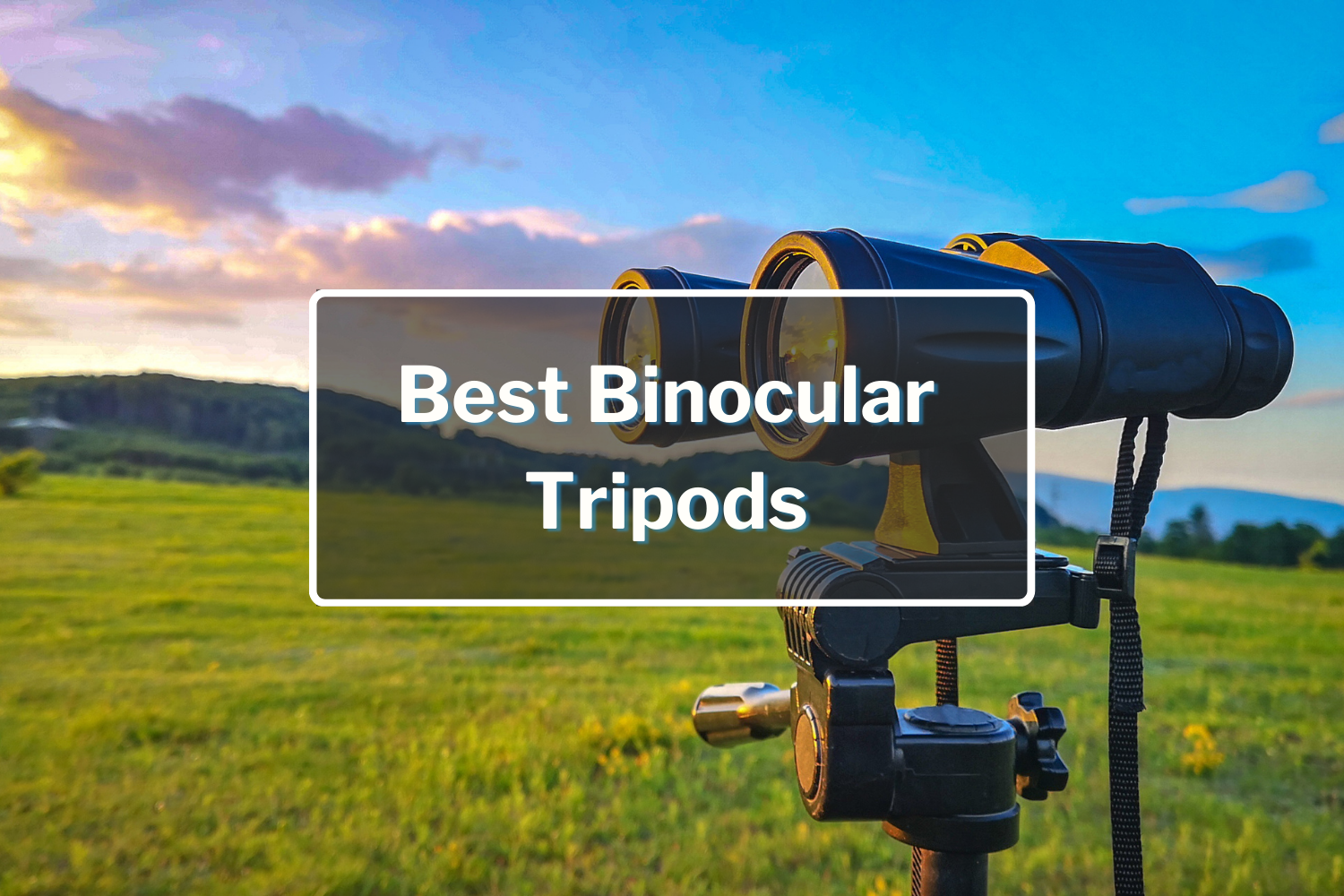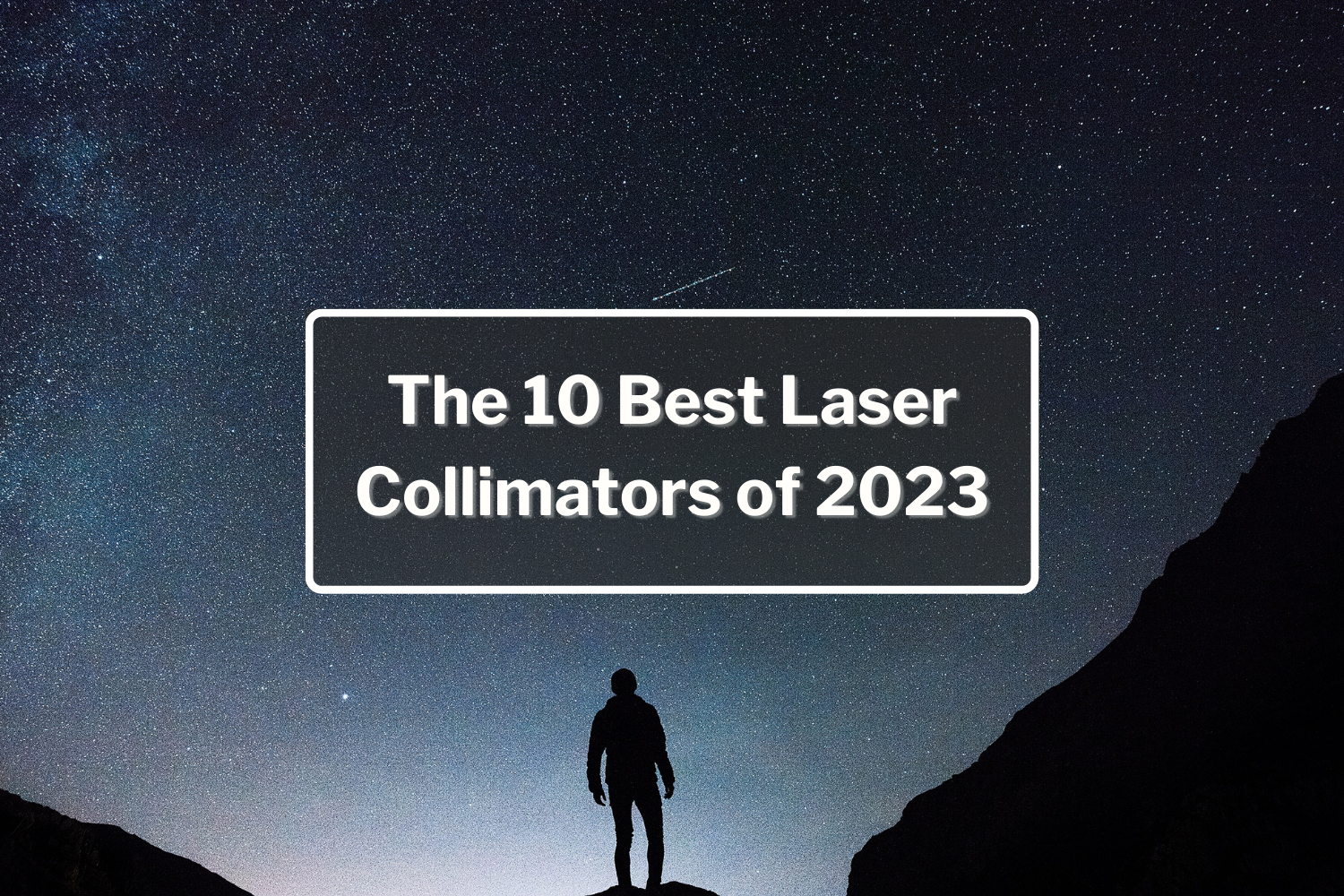A Guide on Choosing the Best Telescope Eyepieces

Telescope eyepieces focus light that is collected by a telescope, so you can observe a sharp view of the object that the telescope is pointing at. It may seem like a small link in the chain, but it has a huge effect on your telescope's optical system, and finding the right eyepieces will greatly enhance its potential. A great telescope is useless without a quality eyepiece to go with it!
With so many options to choose from, selecting the right set of eyepieces for you and your telescope can seem a little tricky. This guide offers some insight and explanations on different eyepiece types, specifications, and how it all ties together to get the best possible views of the cosmos!
What is Eyepiece Magnification and Focal Length?
Magnification is the most important specification of any eyepiece, and will tell you how zoomed in the view that your eyepiece & telescope has. Magnification varies based on both the telescope and the eyepiece you use, so it's not a constant number. We can use the focal length of both the eyepiece and telescope to determine the magnification with the following formula:
For example:
- A 20mm eyepiece on a 2000mm telescope (2000 / 20) gives you 100 power (100x), this makes objects appear 100 times closer to you through the telescope than they appear to your unaided eye.
Note: When using your telescope at different powers, you generally have a choice of a small, sharp, and bright image at lower magnification; or a larger, yet blurred and dim image at higher magnification. The reason being is that the telescope gathers a fixed amount of light, and at higher magnifications, the same amount of light is being spread over a larger area, resulting in a dimmer image.
How Your Telescope and Sky Conditions Affect Magnification
You might have already concluded that a smaller telescope won't give as magnified of a view as a larger one. But why is that? Telescopes have a limit of how much magnification they can provide when paired with an eyepiece. This is limited by two factors: 1) your telescope's aperture, and 2) the conditions of the sky when you're observing.
Your telescope's aperture is the main factor in what decides how much magnification you can use. This is known as Maximum Useful Magnification, and you may see this as a specification on telescopes. There is a simple formula to determine the Maximum Useful Magnification of your telescope:
Maximum Useful Magnification = Telescope Aperture (mm) x 2
You can also take the aperture in inches and multiply it by 50 to get the same result. So, for example, if you have a telescope with an aperture of 200mm (8"), your Maximum Useful Magnification is 400x. Therefore, if your telescope has a focal length of 2000mm, you can use up to a 5mm focal length eyepiece.
Now, this comes with an asterisk. This number is the Maximum Useful Magnification, assuming your sky conditions (atmospheric seeing) are perfect. Atmospheric seeing is how still or unsettled the atmosphere around you is. When atmospheric seeing is poor, the turbulent air will blur the view and cause the moon and planets to look wobbly:

When atmospheric seeing is good, the stable air will allow for a much clearer and sharper view of the moon and planets:

Most of us are not privileged to live under such perfect sky conditions, and more often than not, it is far from perfect. For that reason, it is usually best to start observing with your longest focal length (lowest power) eyepiece first and work your way up in magnification until the view starts to degrade, and then find the eyepiece that hits the sweet spot. This is why it's so important to have an arsenal of eyepieces to use so you can get the best views based on the ever-changing conditions of the night sky!
Which Telescope Eyepiece Is Best?
To get the best views no matter what the sky conditions are like, one single eyepiece won't do the job. Instead, it's best to have a range of eyepieces from low, medium, and high power magnification eyepieces for your telescope. Take a look at the different eyepiece ranges below with examples of what magnification they provide. At a minimum, we recommend having at least three eyepieces: one low power, one medium power, and one high power eyepiece so you can observe anything you would like to. If you don't have the budget for three separate eyepieces, a zoom eyepiece can be a good choice in a pinch, but won't provide as much sharpness and clarity as individual eyepieces can. If you're looking for a quality set of eyepieces for an affordable price, check out the TPO eyepieces here.
Comparing Eyepiece Magnification and Focal Lengths
2 - 4mm Eyepieces - Best for Observing the Planets & the Moon with a Short Focal Length Telescope
Ultra-short focal length (2-4mm) eyepieces provide very high power magnifications and are best for observing the planets and the moon on shorter focal length telescopes. It isvery rarethat the atmospheric seeing conditions will allow you to use these eyepieces on a longer focal length telescope since they're very high power.
5 - 10mm Eyepieces - Bestfor Observingthe Planets & the Moon with a Medium Focal Length Telescope
Short focal length (5-10mm) eyepieces provide high power magnifications and are best for observing the planets and the moon on medium focal length telescopes. It is rarethat the atmospheric seeing conditions will allow you to use these eyepieces on a longer focal length telescope since they're high power.
10 - 20mm Eyepieces - Best for Deep Sky Objects and the Full Disc of the Moon
Medium focal length (10-20mm) eyepieces provide medium power magnifications and are best for observing larger deep sky objects and the full disc of the moon on most average telescopes. It is somewhat commonthat the atmospheric seeing conditions will allow you to use these eyepieces on a longer focal length telescope since they're medium power.
20 - 30mm Eyepieces - Best for Viewing Deep Sky Objects
Long focal length (20-30mm) eyepieces provide low power magnifications and are best for observing larger deep sky objects and the full disc of the moon on almost all sized telescopes. It is common that the atmospheric seeing conditions will allow you to use these eyepieces on a longer focal length telescope since they're low power.
30mm & Longer Eyepieces - Best for Large Deep Sky Objects
Very longfocal length (30mm & longer) eyepieces provide verylow powermagnifications and are best for observing the largest deep sky objects and even terrestrial objects onalmost all sizedtelescopes. It is verycommon that the atmospheric seeing conditions will allow you to use these eyepieces on a longer focal length telescope since they're very low power.
Other Telescope Eyepiece Specifications to Consider
Field of View: Apparent and True
An eyepiece's Apparent Field of View (AFOV) is expressed in degrees (°). It is how much of the sky is seen edge-to-edge through the eyepiece alone. AFOV's range from narrow (25° - 30°) to an extra-wide angle (80° or more).
An eyepiece's true field of view is the angle of sky seen through the eyepiece when it's attached to the telescope. The true field can be calculated using the following formula:
True Field = Apparent Field / Magnification
For example, suppose you have an 8-inch Schmidt-Cassegrain telescope with a 2000 mm focal length and a 20 mm eyepiece with a 50° apparent field. The magnification would be 2000 mm / 20 mm = 100x. The true field would be 50/100, or 0.5° - about the same apparent diameter as the full moon.

Telescope Eyepiece Eye Relief
Eye Relief refers to the distance between your eye and the eyepiece lens when the image is in focus. Eye relief is traditionally in proportion with focal length: The shorter the focal length, the shorter the eye relief. However, some of the more modern eyepiece designs provide long-eye relief regardless of focal length, which is especially beneficial to those who wear glasses. If you like to keep your glasses on while using a telescope, the eye relief of an eyepiece is an important specification to consider (we recommend looking at long-eye relief eyepieces).
How Exit Pupil Relates to Magnification
Exit pupil refers to the size of the bundle of light rays coming out of the eyepiece. Exit pupil size (in inches) can be calculated by:
In order for all the light rays to enter your pupil, the exit pupil must be smaller than the pupil of your eye. A young person's fully dark-adapted eyes may have 7 mm-wide pupils. As you age, the maximum pupil diameter decreases. For middle-aged adults, the practical maximum is closer to 5 mm.
At the other end of the scale, magnifications that yield an exit pupil in the range of 0.5 mm to 1.0 mm, empty magnification begins to set in, depending on the quality of your telescope and your eyes. In other words, this much magnification starts to degrade the image you see.
What Is A Barlow Lens Used For?
A Barlow lens increases magnification on your telescope's eyepiece, usually by a factor of 2x or more. So if you use a 2x Barlow with a 20mm eyepiece, it effectively becomes a 10mm eyepiece but at the cost of some reduced clarity and sharpness. The idea is that two eyepieces and a Barlow will give you the flexibility of magnification of four eyepieces, and will give higher magnifications with less powerful eyepieces.
Telescope Eyepiece Sizes
When shopping for eyepieces, you may see that eyepieces come in a variety of sizes like 1.25", 2", and others. One easy way to make sure you buy the right size eyepiece is to check your telescope's manual or online specifications for what size focuser it has. If your telescope has a 2" focuser, it can accept 2" eyepieces and accessories as well as 1.25" with an adapter. If it has a 1.25" focuser, it will only be able to accept 1.25" eyepieces and accessories. Bigger isn't necessarily better for eyepieces, so don't worry if your favorite eyepiece only comes in 1.25" size! Once you've figured out which sized eyepieces your telescope can accept, head to one of the links below to shop the right size for you:
- 1.25" Eyepieces (most common)
- 2" Eyepieces
- 3" Eyepieces (only compatible with large telescopes)
- 0.965" Eyepieces (former standard eyepiece size for older telescopes)
Summary of Basic Tips to Follow When Shopping for Telescope Eyepieces
-
Consider the focal length of your telescope to make sure the eyepiece will give you a good magnification
-
If you wear eyeglasses while using a telescope, pay attention to the eye relief specification of different eyepieces, as ample eye relief can improve comfort and ease-of-use while wearing corrective lenses.
-
Depending on your observing goals, consider the apparent field of view of your eyepiece choices.
-
If versatility is paramount, consider a zoom eyepiece or Barlow lens to increase the number of possible magnifications to use.
3 Responses
George
Hi. I have the STARSENSE EXPLORER LT 127AZ telescope. Which eyepiece do you suggest to buy to have the best maximum zoom for observing Saturn or Jupiter?
Dwayne STANLEY
Looking for something that I can see the stars with in the moon and the rest of the planet planets



















Kristof Cappoen
December 03, 2021
Hi I have a 8 inch edge HD. I bought it used and there are no eye pieces or spacers. Do I go 2 inch or 1.25? And then what strength I am looking to buy 3: 40mm 25mm and 10ish mm with a barlow. Any and every recommendations would be appreciated.